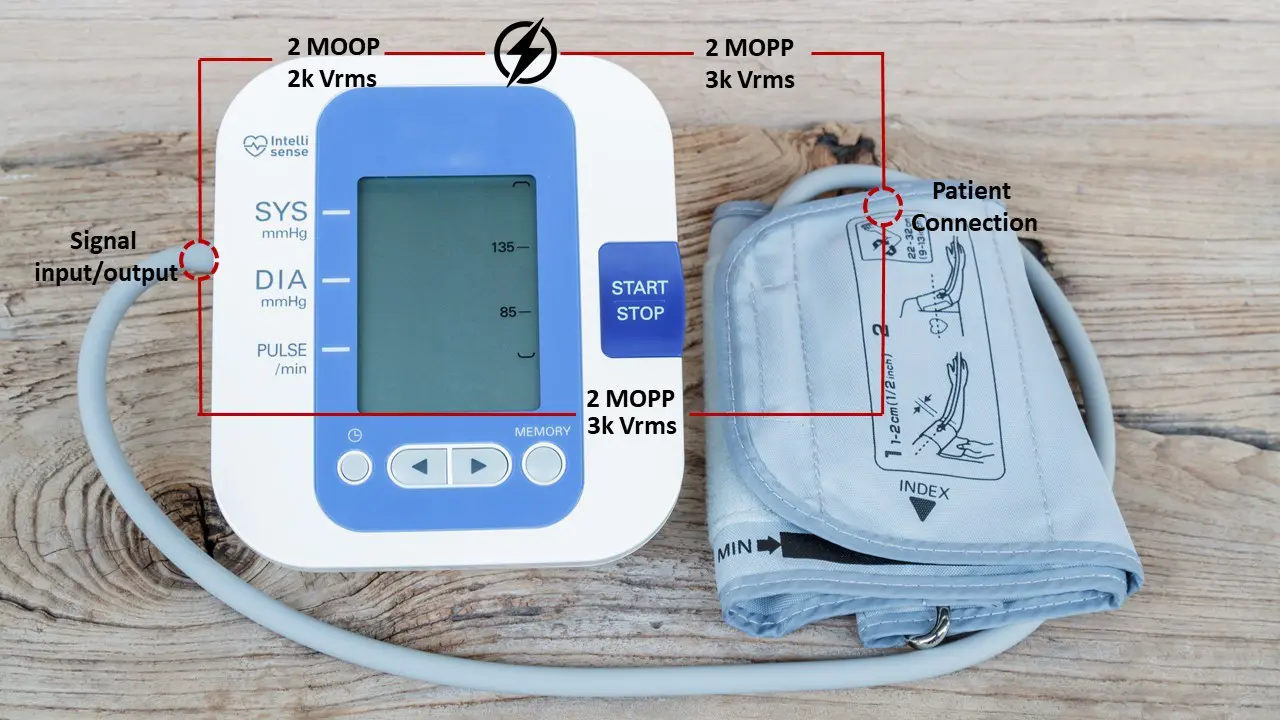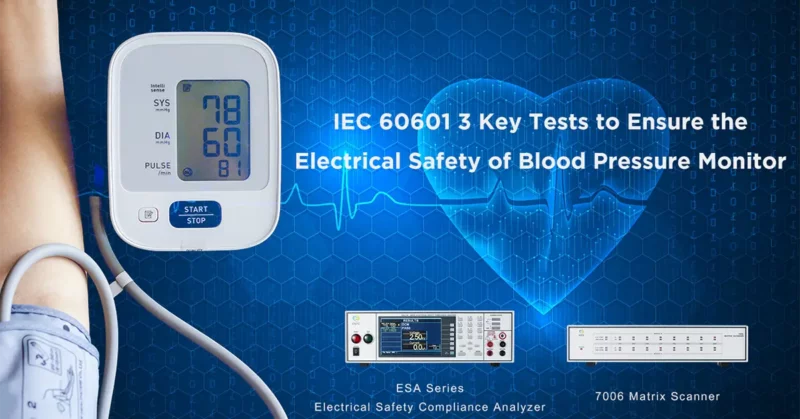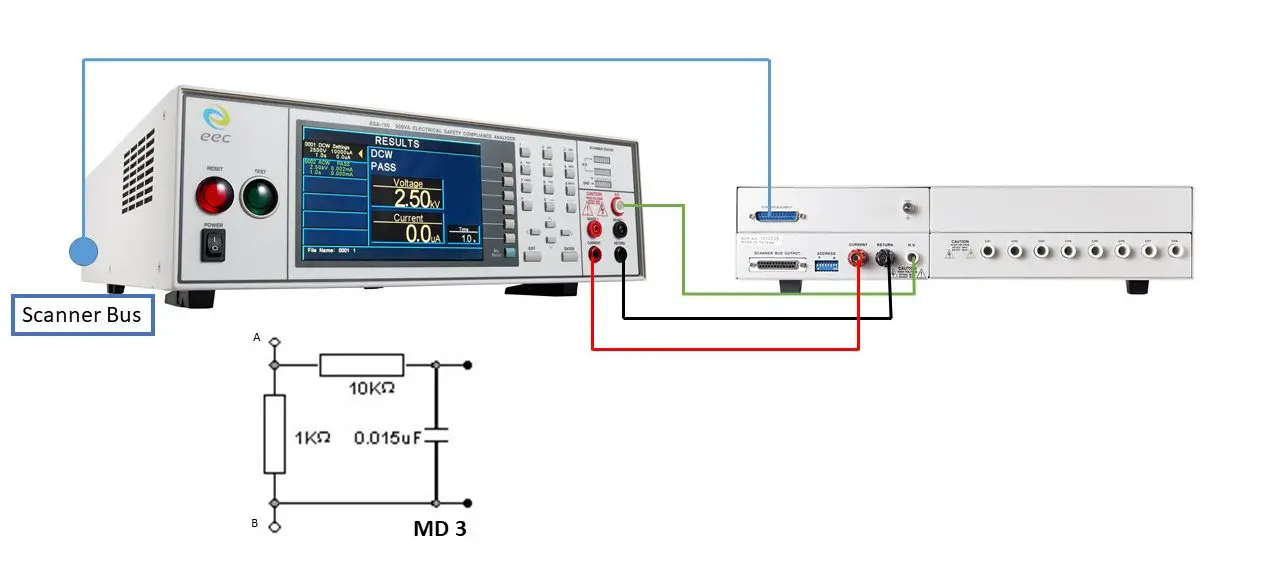A 5 min Read
Since the COVID-19 outbreak, people realize the key to combat this pandemic is to stay safe and healthy. In other word, means stay at home and maintain a healthy lifestyle by home exercising. Home-use medical devices are also getting popular in monitoring this process. Especially the blood pressure monitor (also known as a sphygmomanometer) became a must-have in most families. However, most consumers would never have known how these simple and easy-to-use devices may have hidden danger during operation if they are not designed and manufactured properly. To ensure users' safety, the international medical device safety regulations have strict electrical safety testing requirements. Here's how.
How to Ensure the Electrical Safety of Blood Pressure Monitor?
A blood pressure monitor is not only required high accuracy and reliability, but safety is also equally important. Therefore, IEC 80601-2-30 (Particular requirements for non-invasive sphygmomanometers) and IEC 60601-1 (General Requirments) specifically requires the blood pressure monitor should pass the following three electrical tests: ground bond test, Hipot test, and leakage current test to ensure the patient and operators’ safety.
Ground Bond Test
To ensure the fault current can flow to the ground when the blood pressure monitor is malfunctioning, it needs to conduct the ground bond test. The tester connects to the earth terminal of the blood pressure monitor and injects at least 25 A DC or AC current. The return path connects to the chassis or grounding protection. After 5 to 10 seconds, measure the voltage drop of this circuit and calculate the ground resistance (ground resistance = voltage drop/ testing current). This should less than 200 mΩ.
Hipot Test
The key to prevent the patient and operator from getting electric shock is the insulation protection of the blood pressure monitor. To verify its quality and safety, IEC 60601-2-30 required to conduct the following three Hipot test:
- Power input terminal to signal input/output terminal
- Signal input/output terminal to patient connection terminal
- Power input terminal to patient connection terminal
In general, the working voltage of the blood pressure monitor is less than 60Vdc. So, the following test voltage is based on this. (If the devices have a different work voltage, please refer to IEC 60601-1 for more details.) First, the power input terminal to the signal input/output terminal needs to comply with 2 Means of Operator Protection (2MOOP). Therefore, the Hipot test should use 2k Vrms and maintain for 60 seconds. Further, the patient connection terminal directly connects to the patient. It needs additional protection on it, so the signal input/output terminal to the patient connection terminal and the power input terminal to the patient connection terminal need to comply with 2 Means of patient protection (2MOPP) requirements. The test voltage for this is 3kVrms and maintain for 60 seconds.
To learn more about MOOP and MOPP, click here

Figure 1. Blood Pressure Monitor Hipot Test Connection
Leakage Current Test
To avoid the leakage current cause electric shock, the blood pressure monitor requires the leakage current test. The leakage current includes touch current and patient leakage current (In issue 5, we introduced more details about leakage current). To conduct this test, the blood pressure monitor needs to connect to the measuring device (MD) and the 110% of the rated input voltage in normal/fault condition. The touch current can’t exceed 100 µA. The patient leakage current includes patient to earth and the same type of applied part connected together. According to a.c./d.c work voltage and product type (currently mostly blood pressure monitor does not pass through the heart, so most of them are BF type.) We summarize them in the following table:

Accurately Test on Each Electrical Safety Requirement to Ensure the Safety of the Patient and Operator.
To ensure the patient and operators’ safety, the blood pressure monitor needs to comply with each electrical safety requirement. IEC 60601 required additional test criteria for the Hipot test and leakage current test that simulate the real usage scenarios. Ikonix has more than 80 years of industry experience. We knew the medical device manufacturers have a high standard for their products’ safety and quality. Therefore, we provide the most complete electrical safety testing solution. ESA Series Electrical Safety Compliance Analyzer provides all required electrical safety tests in the medical device industry. It also has built-in MD (MD3). Bundle with a 7006 matrix scanner, you can measure Hipot test or leakage current in multiple test points at once. Saving time on changing the wire connection during the testing process. Our solution does not only provides you an accurate result but also helps you improve the testing efficiency.
Figure 2: ESA and 7006 Connection Method and Built-in Measuring Device (MD3)
With the increase of health awareness, the demand for blood pressure monitors and related medical devices will keep increasing. Ikonix continues to cooperate with leading medical device manufacturers to ensure patient and operators safety. If you want to know more about our medical device solutions, simply contact our sales representative.
Issue 17 – May 2021
Ikonix monthly e-Newsletter that provides rich and intelligent content covering latest company news, electrical testing insights, solutions and applications. Happy Reading!
About Ikonix
For 80 years, Ikonix has been producing cutting-edge electrical safety testers and AC power sources for a variety of industries. We strive to earn our customers’ trust by consistently offering dependable products, services, and reliable support for all testing applications.






